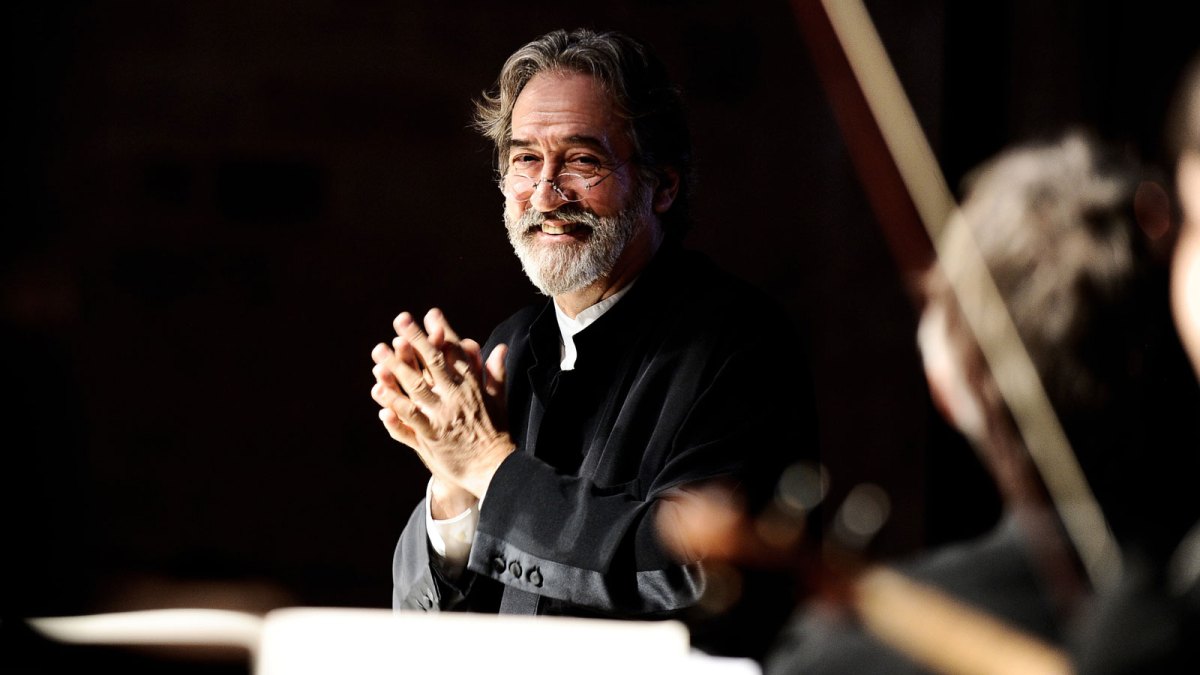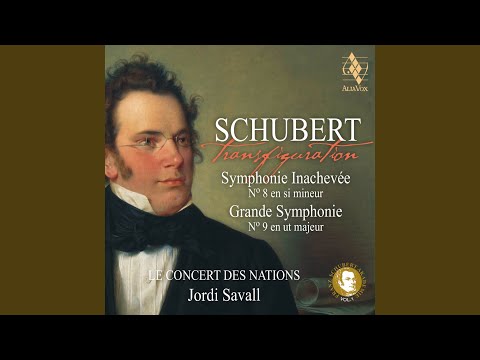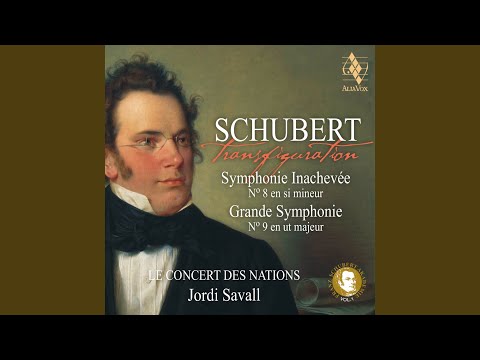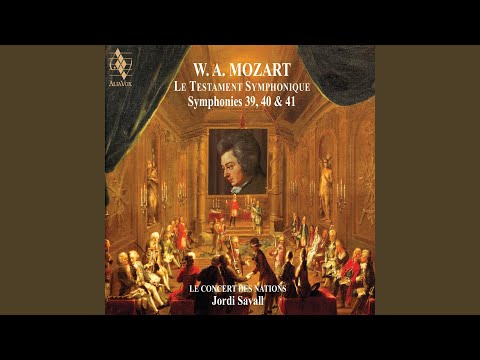Gambist and conductor Jordi Savall has recorded over 200 albums, most featuring music written before 1750—the year most mainstream conductors’ repertoire begins. Then, in 2018, Savall began a plan to perform multiple projects of Mozart and Beethoven. He was dipping his toe into the 19th century. Last week in Barcelona, Savall performed Schubert’s Eighth and Ninth Symphonies for the first time—a seemingly head-scratching incongruity that might strike some as bizarre as hearing that the 81-year old viola de gamba player would be DJ-ing at an Ibiza nightclub.
Savall recently released both Schubert pieces on his label, Alia Vox, with Le Concert des Nations. I spoke to Savall before the concert about playing Schubert with period instruments and about how, after 50 years of performing and recording music spanning six centuries, he wound up here.
VAN: You are known for your recordings of early Western music from the medieval to the baroque. There is much you could still mine in those eras. Why did you choose to do these Schubert symphonies now?
Jordi Savall: In 1994, we started to develop the classical repertoire with the orchestra [Le Concert des Nations]. And then I made a plan for the last four years: We have worked on the seven last works of Handel, the three last symphonies of Mozart, “Die Schöpfung” by Haydn—and then in 2019 and 2020, I had planned to do all nine Beethoven symphonies in two years. Last year we had to use the dates we had planned for Schubert to do the canceled Beethoven concerts.
Are there plans to do more Schubert?
No. Now we are working on Mendelssohn: We did the “Italian”—the versions from 1833 and from 1834, which are very different. We will do the “Scottish,” and then “A Midsummer Night’s Dream.”
Does it feel different to rehearse these Romantic-era pieces? Does it feel different to perform them?
No, not at all. There’s no difference performing them. We’ve had success performing Beethoven in Germany. Rehearsing is different from the Baroque repertoire. We normally do it in two to three days. Preparing two Beethoven symphonies takes 12 days.
Is that because of the length of the pieces or the instrumentation?
The instrumentation and the length, but also because the repertoire is not familiar to us. We have to resolve the intricacies of the score; we need to really be inside the music. And to be inside you need to play and play and play. And listen.
Is that different for work that is 400 years old instead of 200 years old?
Yes and no. 100 years ago, there was not the same idea of perfection. There were no recordings, so the audience was hearing this music for the first time. And the musicians were seeing this music for the first time, maybe only rehearsing for two or three days. But musicians 400 years ago were used to playing new pieces every day. They played new pieces all the time. They knew how to read and understand quickly.
For 80 to 90 percent of the musicians in our orchestra, this repertoire is new. They are in the same situation as the musicians in Schubert’s time.
The latest from VAN, delivered straight to your inbox
Is this very different from conducting Schubert with the Berlin Philharmonic?
Yes. They say, “Well, what do we have to rehearse? We already know the piece.” This happens to me often when I go to an orchestra. I say, “I have different ideas. We need to practice and try them.”
So, with Le Concert des Nations, this process of trying new things happens with the musicians and you together—the learning curve is the same. Is that an important part of the process?
Yes. We are following history. We go with Rameau, then Glück, with Mozart, Haydn, and Beethoven. It’s a natural evolution. And the instruments haven’t changed too much—maybe the bow is a little more flexible, the winds have a little evolution, but it’s basically the same. Gut strings, flexible bows, ornamentation; natural horns, natural trumpets, timpani with gut instead of plastic—everything is in the memory of the musicians. The musicians who come from Mahler and Strauss have another conception.
As if they’re going backwards, while you’re moving forwards.
Yes. It’s very difficult to take away all the prejudices. And so [they] can sometimes play Beethoven or Schubert like a Mahler symphony because the orchestra is so big. Naturally, you end up changing things without knowing it. Only very special conductors—like Carlos Kleiber—understand how to look back without altering it.
Some period instrument groups have recorded Schubert Eight with the unfinished Scherzo—others even interpolated a fourth movement from another piece. Why not experiment more with the fragments?
At the same time Schubert composed the “Unfinished,” he wrote the beautiful [text] “Mein Traum” [“My Dream”].This piece is also in two parts. And he’s saying: “When I looked for love, I found pain. When I looked for pain, I found love.” I think this is what he’s trying to say in the Eighth, it’s music which is such a mix of pain and beauty. It’s so complete. You cannot play the Scherzo after that. [He hums the final notes of the second movement of the Eighth, the Andante con moto.] It’s so…it’s really perfect.
Your recording of the “Unfinished” ends quietly, subtly. Many traditional recordings give the ending a dramatic oomph to make it feel more complete.
No, you have to let the music mourir [die]. The sound has to end naturally. [He sings the final note and lets it linger out.] Not intentionally. Just let it go away.
Are you suggesting the symphony is actually finished?
[The title “Unfinished”] is the consequence of the traditional form that a symphony has four movements. But I think since “Mein Traum” is in two parts—I see the symphony as the musical version of “Mein Traum” in two movements.
You’ve been a great champion of music from the Iberian Peninsula, but now you’re taking on the music of Mozart, Beethoven, and most recently Schubert…
Remember the situation in Vienna [during the first Viennese School]. In Vienna, there were more Italian composers than German composers. Salieri… the influence of southern Italian music was very strong. In the conception of making music, Italian music was popular everywhere. Even in Beethoven’s symphonies you find moments where you can see, This is like Italian or French music. I think what is important is that this music is not German music, it’s not Austrian music, it’s European music. This music is the language of Europe. When we get to Haydn and Mozart and Beethoven, we’re at the moment in which these composers are not “local,” but rather part of a bigger European culture.
The term “classical music” is one that many of your musical projects seem to challenge. How should we listen to music from the past versus music from the present?
I compare my way of approaching music to how we have begun, in the last 25 years, to restore big, old paintings and murals that were all dark from the smoke and the buildup of dirt over time. When we did that, we discovered incredible colors, colors that we could not have imagined. What we are doing is putting these colors back in place.
You know, modern instruments are perfect for contemporary international pieces. But they are also totally foreign. The modern flutes are metal, gold plated, and they have a metal sound. Oboes are 80 percent metal now. And this is a big difference. In our Schubert and our Beethoven you can discover the timbre, the color of the different combinations. The modern trumpet, to have the brilliance of a natural trumpet, has to play so loud that it loses flexibility. A natural horn can play loud, but the rest of the music can be heard. But this is not possible if young musicians are working with modern instruments from the very beginning. 40 years ago, this would have been impossible. The musicians were not prepared to play a natural horn.
We simply want people to hear things as if they are going back to the 18th or 19th century. I never say ours is the only way, but I think it’s nice for the musicians that we are coming from this place, and we can improve in the direction of history. Not against it. ¶
Subscribers keep VAN running!
VAN is proud to be an independent classical music magazine thanks to our subscribers. For just over 10 cents a day, you can enjoy unlimited access to over 875 articles in our archives—and get new ones delivered straight to your inbox each week.
Not ready to commit to a full year?
You can test-drive VAN for one month for the price of a coffee.




